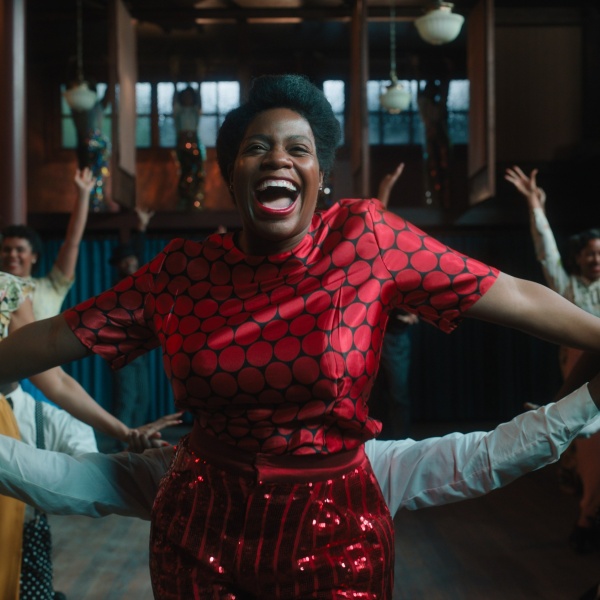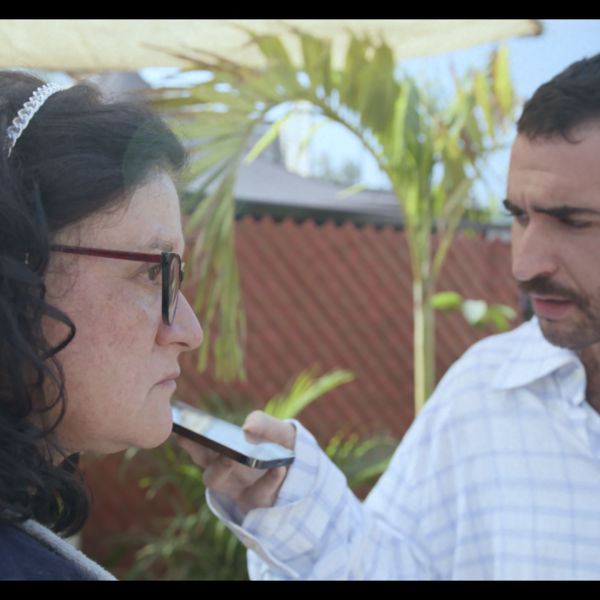
From the mind of Sean Durkin, “Martha Marcy May Marlene” is an unsettling and stunning experience (check out our Sundance review). The film follows the dual narrative of Martha (Elizabeth Olsen), a young girl who becomes absorbed into a small cult community, only to escape to the confines of her sister’s lake house. As we see both parts of this story run parallel, we discover that Martha may not be ready to assimilate back into society, as she quarrels with her sister and her sister’s husband, unable to understand what could be considered a “right” way to behave. Meanwhile, we also are given a window into her life on the cult commune led by the creepily magnetic Patrick played by John Hawkes.
We sat down with writer-director Durkin and star Elizabeth Olsen to discuss making the film, what their influences were, and how they view this schism between the farmhouse and the lake house, and the tensions therein.
Durkin had researched the picture by speaking with people in cults.
For obvious reasons he wouldn’t share the details, but Durkin had plucked inspiration from people who he had known with experiences in cults. Though his interests ran deeper. “Ever since I was a kid, the idea of conforming really scared me,” he says, suggesting the primal appeal of the film. “And even to this day, people I talked to who have got out of [these cult situations] have a fear of them coming back.” To give you more of a clue about Durkin’s approach to “Martha Marcy May Marlene,” his two favorite movies are “The Shining” and “Rosemary’s Baby.”

Olsen’s most important acting decision was to react to everything.
Throughout the film, Olsen’s Martha is terrified of her surroundings, both in her discomfort with the farm where she’s held captive and the lake house where she stays with her sister. Olsen’s approach was to not so much play the character as play to her environment. “Even if she’s by herself in the room, you have to realize there might be something outside she’s reacting to, [even if it‘s] just a boom mic operator dropping the boom mic,” Olsen says. “You just react to anything that’s stimulating so you can always be stimulated by your surroundings.” She laughs, then adds, “I think that’s how paranoia works!”
Durkin apparently took cues on directing from his background as a soccer player.
Durkin was a serious soccer enthusiast at a young age, though an injury kept him from participating in college sports. While this may have changed his life’s calling, the sport certainly influenced his creative decisions on the set all these years later. “What I learned from directing, I learned from soccer, where it’s like a coach-player relationship,” he says, in relation to directing actors. “And the worst thing that happened to me was that I completely lost my confidence as a player, and so I never was able to make it on the team in college. I always try to keep the confidence of the actors, and try my best to make them feel comfortable or confident.”
Working with John Hawkes meant shortening the script, as his portrayal was strong enough to omit several lines of dialogue.
As the “cult leader,” John Hawkes delivers what is now a typically-intense, frightening performance from him. Hawkes had apparently worked so hard on the character, however, that it rendered much of his dialogue completely moot. This created a nice problem for Durkin and company, trying to figure out what to keep, and what to discard. “In the script, his speeches were a lot longer,” Durkin says. “And when we were shooting the film, we realized we didn’t need them to be so long, and we thought, what do we do? I wanted to make it seem like when he was giving a speech, it seemed like he wouldn’t be giving a speech. John was really great with that, to find the words. He’s a really hard worker and generous.”
Olsen, who watched Hawkes’ preparation up-close, added, “There were no weird games or tricks or anything like that, which is good because Martha has to be so comfortable with him.”
Despite the subject matter, Olsen feels it’s an optimistic film at heart.
Throughout the picture, Martha struggles to acclimate herself to her surroundings, both with the cult and with her sister, who attempts a crash-course in modern civility. When she struggles, it can be hard to watch. But in those struggles, Olsen finds hope. “I don’t think of it as all these failures, but these hopeful moments, trying to figure it out,” Olsen says optimistically. “It’s hard to watch, but I think she’s someone who’s a survivor, so I don’t think it’s a tragedy.”
Adds Durkin, “The film is meant to be her experience, to leave this group, to find herself. So yeah, it’s gonna be a bit hard to watch.”
The most personal character to Durkin is Hugh Dancy’s Ted.
In the film, Martha finds salvation at her sister’s lake house, but the tension erupts immediately between her insecurities and her sister’s husband, with his desire to find comfort with his wife. “I wanted people to react strongly to him,” Durkin says, claiming this is the one character most specifically based in real life. “The script never crossed the line with her, but Hugh wanted to make it even more restrained. But I didn’t want it to be these two sisters, and then the fluffy husband. When you have a couple living in a house and someone is coming to stay, that welcome wears off real fast. I’ve had best friends stay with me, and when you’re married, after three days, it’s like, ‘You gotta go, man!’”
“Martha Marcy May Marlene” opens this Friday.




